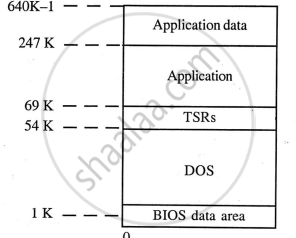Topics
Electronic Components/ Study of Components and Circuits
- Introduction to Electronic Components
- Classification Of Components
- Resistors
- Types of Resistors
- Capacitors
- Types of Capacitors
- Inductors
- Basics of Transformers
- Basics of Semiconductor Devices
- PN Junction Diode
- Half Wave Rectifier
- Types of diodes
- Transistors
- Transistor Amplifier
- Basic of Transistor as a Switch
- Switch Mode power Supply (SMPS)
- Classification of IC’S
Logic Gates and Sequential Circuit
- Introduction of Logic gates and sequential circuits
- Basics of Logic Gates
- Types of gates
- Odd/Even Parity
- DE-MORGAN'S Theorem
- NAND Gate is an Universal Building Block
- HALF ADDER AND FULL ADDER
- Multiplexers
- Demultiplexer
- Encoder
- Decoder
- FLIP-FLOPS
- Counters
- Shift Registers
Functional Hardware of Pc
Peripheral Devices
- Introduction
- Conventional memory
- Expanded Memory
- Extended Memory
- Physical Vs Logical memory
- Virtual memory
Types Of Memories(Including Semiconductor Memories)
Conventional memory
Conventional memory is the first 640 KB of a PC's memory, used by DOS and DOS programs. It includes the bottom 1 KB for BIOS, 53 KB for DOS, 15 KB for TSRs, and space for application programs. This memory is crucial for running standard DOS applications.

Expanded Memory
Expanded Memory Specification (EMS) allows DOS-based computers to use more than 1 MB of memory, managed by EMS drivers. DOS reserves the upper 384K for special functions, leaving 640K for programs. EMS versions 3.0 and 3.2 support up to 8 MB for data. EEMS, developed by AST, also supports extra memory for code. EMS 4.0, developed by Lotus, Intel, and Microsoft, increases the limit to 32 MB.
Extended Memory
Extended memory is the most efficient way to use memory beyond the first megabyte, as it can be directly addressed. Before Microsoft Windows 3.0 (1990), expanded memory was preferred. However, Windows 3.0 and later versions include an extended memory manager, allowing programs to use extended memory without conflicts.
Physical Vs Logical memory
"Physical" pertains to hardware, while "logical" or "virtual" refers to software objects. A physical data structure is the actual organization of data on a storage device, whereas a logical data structure is how the information is presented to a program or user.
Virtual memory
Virtual memory is a simulated memory area supported by some operating systems (e.g., Windows but not DOS) and hardware. Programs use virtual addresses instead of real ones. When executed, these virtual addresses are converted to real memory addresses, effectively expanding the address space available to programs. This allows programs to use more memory than physically available. The operating system divides virtual memory into pages stored on disk, copying necessary pages into main memory as needed. This process, known as paging or swapping, involves translating virtual addresses into real addresses, called mapping.
RAM (Random Access Memory)
RAM (Random Access Memory) is temporary storage in a computer for the operating system, applications, and current data. This allows quick access by microprocessor thus increasing execution speed. It is volatile memory, meaning data is lost when the computer is turned off. RAM, also known as Read/Write memory, is faster than hard disks, floppy disks, and CD-ROMs but loses data when power is off. It is compared to short-term memory, while the hard disk is long-term memory. If RAM fills up, the computer slows as the processor uses the hard disk to swap data. RAM comes in two types: Static and Dynamic, with Dynamic RAM being more powerful, offering larger capacity, and consuming less power.
ROM (Read Only Memory)
Read Only Memory (ROM) is built-in computer memory that stores data permanently and cannot be written to. It contains a program for booting up the computer each time it's turned on, sustained by a long-life battery. Unlike RAM, ROM is non-volatile, retaining its contents when power is off. Early microcomputers lacked ROM and required manual startup programs. ROM enables automatic startup and stores crucial programs like BIOS, which facilitates hardware and software interaction and performs system checks during power-on. Once data is stored in ROM by the manufacturer, it cannot be erased or changed, only read by the computer.
PROM(Programmable read-only memory)
Programmable read-only memory (PROM) is a type of ROM that can be modified once by the user. Unlike ROM, where the manufacturer sets the data, PROM allows users to program the data using a PROM programmer. Once programmed, the data in PROM cannot be changed. PROM is non-volatile. PROM Programming involves using an electrical current to "burn" the data into the memory cells, making it a one-time process.
EPROM (erasable programmable read-only memory)
Erasable Programmable Read-Only Memory (EPROM) can be reprogrammed and erased multiple times. Data is erased by exposing the memory to ultraviolet light, but this requires removing the memory from the main circuit. Incomplete erasure can cause issues when reprogramming new data, and the process is time-consuming. EPROM chips have a window for UV light exposure, typically covered with a label to prevent accidental erasure from bright sunlight.
EEPROM (Electrically erasable programmable read-only memory)
EEPROM (electrically erasable programmable read-only memory) is a type of ROM that can be repeatedly erased and reprogrammed using higher than normal electrical voltage, without needing to be removed from the computer. Unlike EPROM, EEPROM must be entirely erased and reprogrammed each time, and it has a limited lifespan of tens or hundreds of thousands of cycles. Flash memory is a special type of EEPROM that uses standard PC voltages for erasing and reprogramming.
